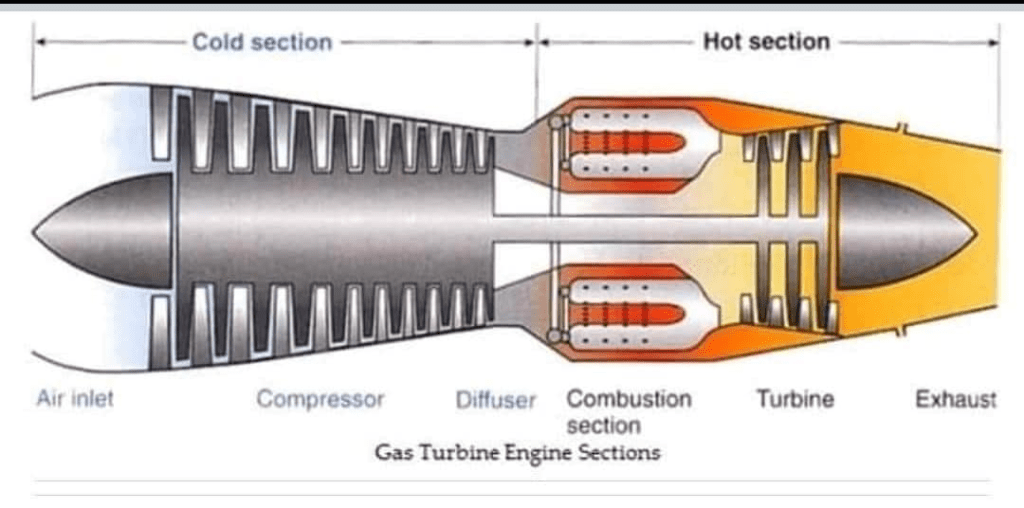
Constructional Configurations
All gas turbine engines consist of the same basic components commonly used in industry.
The basic sections are:
@air inlet
@compressor section
@combustion section
@turbine section
@exhaust section
@accessory section
Additional terms include hot and cold section. A turbine engine’s hot section includes the combustion, turbine and exhaust sections. The cold section, on the other hand, includes the air inlet duct and the compressor section.
The gas turbine powered jet is further broken down into:
turbojet
turbofan
turboshaft
turboprop

Turbine Basic Construction
The mechanical layout of the gas turbine engine is simple in that it consists of four basic sections: compressor, combustion, turbine and exhaust..
In a gas turbine engine, ambient air enters the inlet where it is subjected to changes in pressure, velocity and temperature. The air is directed at the optimal angle into the compressor where pressure and temperature increases and velocity decreases. The air continues to the diffuser where, by the divergent nature of the duct, there is a final increase in pressure and temperature and decrease in velocity to aid in maintaining flame stabilization.
As the air enters the combustion section it is mixed with fuel and ignited, increases the temperature dramatically with pressure and velocity relatively constant. Velocity increase and decrease across the turbine stages whilst the pressure and temperature gradually decreases.
In the exhaust, velocity, pressure and temperature remain relatively constant until the propelling nozzle where a dramatic increase in velocity will take place.
Author – Vander Stone




